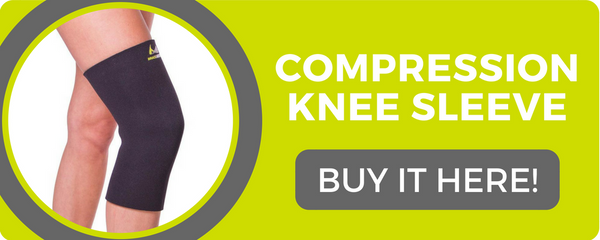R.I.C.E. Treatment: Rest, Ice, Compression, Elevation
RICE Treatment
RICE is a go-to mode of treatment for just about any injury, from repetitive stress injuries to torn or strained ligaments or muscles to stress fractures. Thus, a blog post on the RICE acronym is well overdue.
First off, the acronym RICE stands for rest, ice, compression, elevation. Rice treatment for injury is generally pursued with the goal of reducing the inflammation and swelling that coincides with injuries, ultimately allowing the injury to heal. In the article that follows, I will take you through each of the steps of RICE (rest, ice, compression, elevation) for a more detailed look at why each of these steps is pursued.
Rest
As soon as an injury occurs, it is important to stop doing the harmful activity and give the injured region a break. But it is not easy to rest certain areas of the body. In such cases, a support product might be helpful for minimizing pressure to a given region or immobilizing the injured area.
For instance, RICE treatment for sprained ankle might include the use of an ankle brace or crutches as most of us cannot afford to be bedridden to rest the ankle—not to mention, this would lengthen the recovery process as one would lose muscle and flexibility.
Another important thing to keep in mind relative to RICE injury treatment is that if a certain activity causes pain, you should stop doing it or take a break. Pushing through the pain will only cause additional damage over the long-term.
Ice
Applying ice is an important step of the acronym RICE. Ice should be applied immediately following an injury and during the recovery process. The benefits of ice are that it reduces pain and swelling and can slow bleeding (if applicable). Ice should be applied for 15 to 20 minutes several times a day the first few days following an injury. The ice should not be applied directly to the skin; blunt the cold by wrapping it in a towel or something of that nature.
If the skin turns white in response to the ice, one should stop treatment immediately. Also, those with a vascular disease, diabetes or diminished sensation should ask a doctor before applying ice; in such instances, ice may do more harm than good.
Compression
Compression is the next step in the acronym for RICE that is aimed at reducing swelling. A number of braces available at BraceAbility contain inserts that apply targeted compression. For instance, the Compression Knee Sleeve takes care of both the rest and compression element of RICE for a knee injury.
Alternatively, one can use an elastic bandage to apply compression. When doing so, one must take care not to wrap the injured region so tight that the bandage reduces circulation. If the bandage is too tight, one might experience numbness or tingling in the limb, pain, swelling below the bandage or coolness. (Watch a video introduction to applying compression taping.) For some injuries, a compression sleeve is a simple alternative.
Elevation
Elevation involves taking advantage of gravity as part of the RICE acronym injury treatment. Keeping the injured area above the heart can reduce swelling by allowing extra fluid to drain. When sitting down or icing the injured area, one should elevate the injured area on pillows.
Another important time when it is relatively practical to elevate the swollen limb is at night while one is sleeping. There are splints designed for such uses at night, such as the dorsal night splint for treating plantar fasciitis and other ankle conditions.
Rest, Ice, Elevation, Compression and …
Another add-on, if you will, to the rest, ice compression, elevation (RICE) steps is the use of non-steroidal anti-inflammatory drugs (NSAIDs), like ibuprofen (Advil, Motrin) or naproxen (Aleve). As implied by the name of this drug category, they are helpful in reducing swelling and pain. Check out this guide for a complete anti-inflammatory shopping list.
Rest, ice, compression, and elevation are a good first start, but the steps of the RICE first aid acronym are not always enough to treat an injury. Therefore, if following these steps for several days does not cause the symptoms to improve, one should enlist the help of a medical professional.











